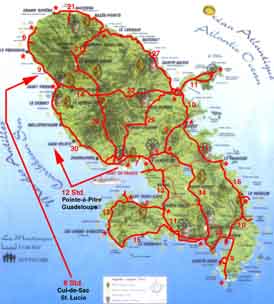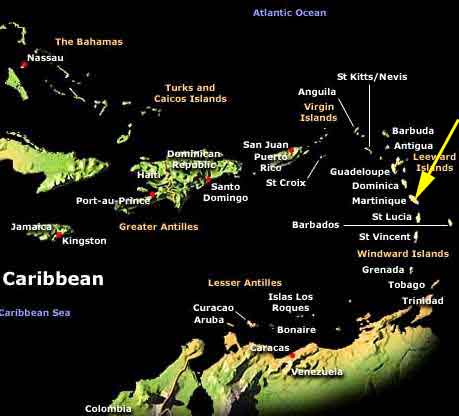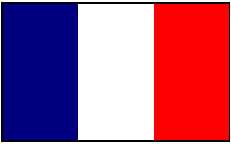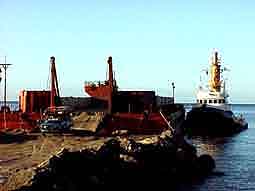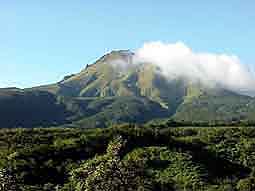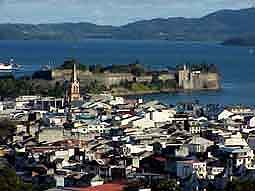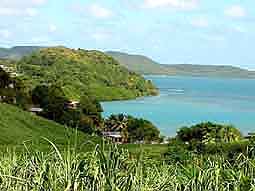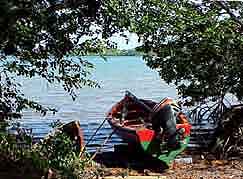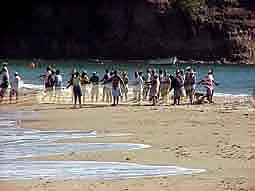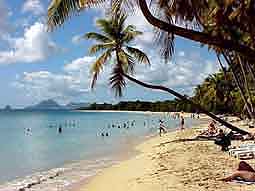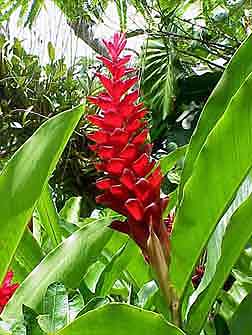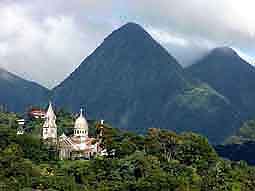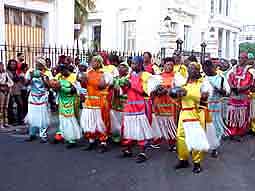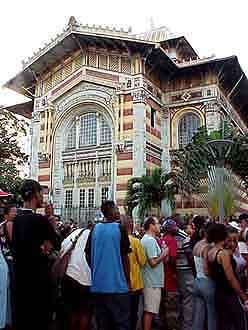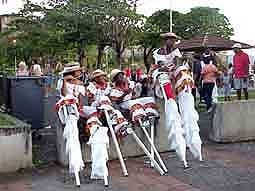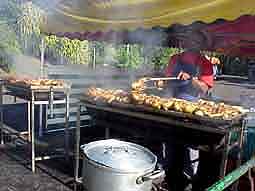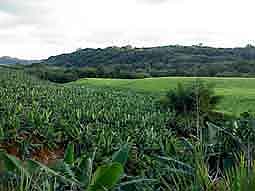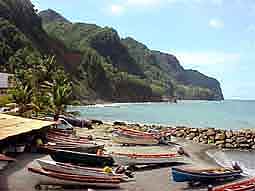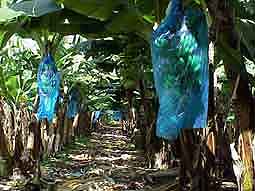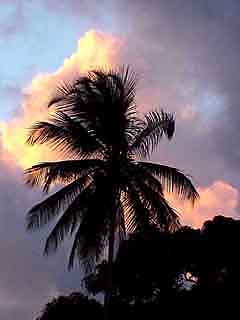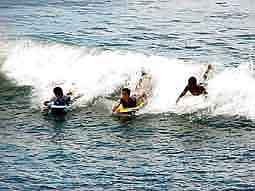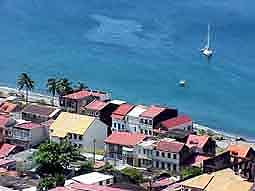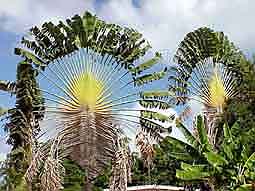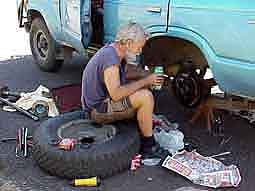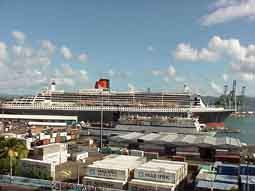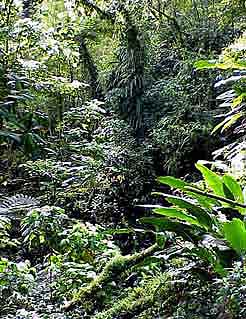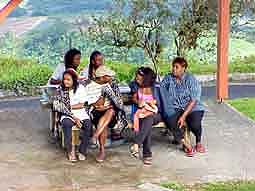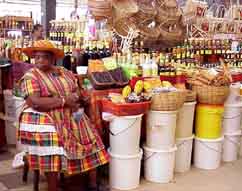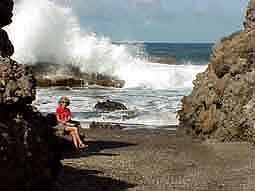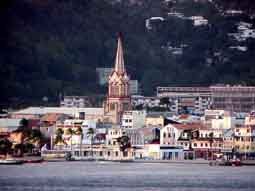![]()
Enjoy some pictures of the worldrecordtour, taken in Martinique
|
|
click a picture to see details |
|
|
|
|
|
|
|
|
|
| Martinique -
"The Island of Flowers"
|
|||
|
|
|
|
| Mt. Pelée, a still active volcano, remembers us very much to the Alps regarding its vegetation. It makes a very peaceful impression and it is hard to believe that on May 8, 1902 within eight seconds it erased the life of the 30'000 inhabitants of the ancient Martiniquan capital St. Pierre nestled on its foot - at that time also called "Petite Paris of the West Indies". The cloud of melted lava flow had the same devastating consequences as the atomic bomb in Hiroshima in Japan. Only a drunkard, who was put over night in an underground prison cell, survived obviously. Today, the new rebuilt St. Pierre has the charm of a quiet Mediterranean fishing village. Lying picturesquely at the seashore, dotted with small bistros, open-air restaurants, pancake stalls and benches at the shady promenade, it reflects very much the flair of Southern France. Everything is looking clean, orderly and neat. Even the multi colored recycling containers can be found - just like in Europe. The small customs station, where we are supposed to do our entry papers, is closed. We are told that the Gendarmes are out in the "field" and are advised to make our customs formalities at the main custom in Fort-de-France. Until we reach the Capital and being a Friday, it is already too late, firstly because on the way we could not resist to stop for fresh baguettes and our much-loved Camembert, and secondly because the traffic increased dramatically the closer we come to town. The first sight of Fort-de-France is a completely knock down: From the four line congested highway we can see an line of houses and unattractive skyscrapers of "low income buildings", which climb up to the hills - as far as our eyes can reach. From the distance, the old city seems relatively small, but we are mistaken. Surprisingly, we find many busy shopping streets. The main attraction is the splendid city park "La Savane", where everybody meets under the shady palm and Tamarind trees and where there is always plenty of activity.
|
|||
|
|
|
|
| On Monday afternoon, we finally drive to the main customs and get a hearty "Welcome". No reproaches why we did not come earlier, no car inspection, and no criticism about one of our tires being worn out. The only thing they want to see is our third party insurance policy. Once again, we may experience the pleasant flexibility, uncomplicated procedure and obligingness of the French people. Would we not have asked for a souvenir stamp into our passports, our entry into Martinique would have taken place without any formalities at all. So, all the worries we had in this respect have luckily disappeared - including the very high port fees (like St. Lucia) and stevedoring fees implemented by the Unions - because we entered the country on a private pier in St. Pierre. We soon realize that Martinique is not exactly Europe - but neither it is really the Caribbean.
|
|||
|
|
|
|
| But they have the Euro and therefore also the European prices. Supermarkets are full of attractive, expensive French products. But it is still possible to get many goods also to reasonable prices in food chains like "Ecomax" and "Leader Price" (comparable with Aldi and Lidl in Germany). Often, they are even cheaper than in the Anglophone countries, except Trinidad. At least for us it seems to be the right place to stock up our diminished provision. It is interesting to notice though that we never found any French product on "English" islands - except once the cheese triangles "La Vache Qui Rit" in St. Lucia. And here in Martinique there are no products from the Caricom countries at all. The Franco-Anglophone ditch seems to be very big - bigger than the one in Switzerland, separating the German and French speaking part. May be that this was also the reason why no delegation from Martinique attended the state funeral of the recently deceased Prime Minister Pierre Charles on the neighbor island of Dominica. Also shipping connections between Franco- and Anglophone islands are practically not existent. This is also the reason, why we have to change the plans for our continuation and head to Guadeloupe instead of Dominica first. This luckily means, that at least for once we will have no problems with customs, as we hop between two French islands.
|
|||
|
|
|
|
|
|||
|
|
|
|
| One day, in the South of the island, misfortune and luck hit at the same time: It is January 28 in Ste-Luce, as suddenly we hear an ear-deafening noise coming from the rear wheel. Luckily we were able to escape to safety from the busy highway to a leveled parking lot before our car comes to a complete halt and we cannot drive anymore one meter. The misfortune is - we already know it - that it is again the rear shaft - the eighth since our journey began in October 1984. And this time, we do not have a new spare one anymore, only a used one bought once in Pakistan years ago. What choice do we have than to use this one? Replacing a shaft takes always four to five hours and at some point, a police patrol stops. The two Gendarmes who approach us are extremely nice, ask how they can help us and even offer us at their near-by police station refreshment, food and showers, what we cannot imagine to happen back home! As the rear shaft always has been a major problem, we need to organize now a replacement pretty soon. The Toyota dealer investigates for us in France and finds out that there is one single left and costs € 1000 including freight. It seems a lot of money to us why we decide to wait and hope to find a more reasonable one somewhere else. It is anyway very surprising that we had to replace it after 40'000 km only (normally, we could drive between 70 - 100'000, a refurbished one in Dubai even made it to 140'000, a second refurbished in Argentina survived only a few hundred kilometers before it broke off and we lost a wheel on an Interstate near Los Angeles). It is difficult to say whether it is the result of an improper treatment when repairing the differential in Trinidad.
|
|||
|
|
|
|
| Incidentally, we are still in Martinique when all of Fort-de-France is in a fever of expectations. On February 4, "MV Queen Mary 2" - the biggest ever build cruise ship - makes a stop here on her inaugural voyage, what brings the whole port to a still stand. For security reasons, no trucks and no cars are being unloaded or loaded. Therefore, we get also stuck as exactly on this date it was foreseen to board for Guadeloupe. But we do not mind. It is very interesting being able to admire this gigantic luxury cruiser with its 345 m length, 41 m width and a gross register ton of 151'400 (compared with 100'000 tons being the biggest ones before). It accommodates 2'620 passengers and 1'253 crewmembers. The cabin prices vary between US$2'000 and US$33'000! The euphoria of the people of Martinique is incredible. To the thousands they show up to attend to this "royal reception", the more that the architect is said to be from this island. Since days, this great event is in every ones mouth, and again and again TV was announcing its arrival at dawn which could be followed live. The authorities and the tourist board "polished" the whole city and prepared it for an unforgettable reception. Everywhere we see happy faces, women in their colorful, traditional dresses, and bands and carnival groups entertaining the crowd. Nearly on every corner beautiful flower bouquets and pots with exotic flowers underline this very special day - the festive spirit pops up everywhere. As all the other neighbors do, also Martinique is fighting with all its means to favor the cruise ship business, as competition is big and tough. The income from tourism is said to be US$300 millions per year. Cruise ship passengers spend an average of US$22 per person. Therefore it can hurt if a cruise ship, which arrives regularly 50 times a year each time with some 3'000 passengers, suddenly is diverted to Dominica! (e.g. "MV Carnival Destiny").
|
|||
|
|
|
|
| On February 9, after 31 days and 1'500 driven kilometers, we finally say good-bye to Martinique - a country with fascinating nature and welcoming and hearty people, who with their mixture of French charm, African exotic and Caribbean flair were very special. They showed us their sympathy again and again, and invited us many times to their homes for dinner. So many times that at the end it became too much for us and we had to find an excuse. Thus, Martinique became unexpectedly a new highlight in our "Cruise" through the Caribbean. The sea is rough with waves up to four meters, as we sail with "MV Neptunia" of the French Marfret/FerryMar-Line to our next destination - Guadeloupe. This time, our LandCruiser is parked safely in the protected hatch. We have neither to deal with a "sandstorm" nor will get wet feet, nor sleep on banana boxes. We are able to stretch our legs on white linen in a comfortable cabin and have the thrill to be wonderfully spoilt by Captain Papic.
|
|||
|
|
|
|
|
|||
